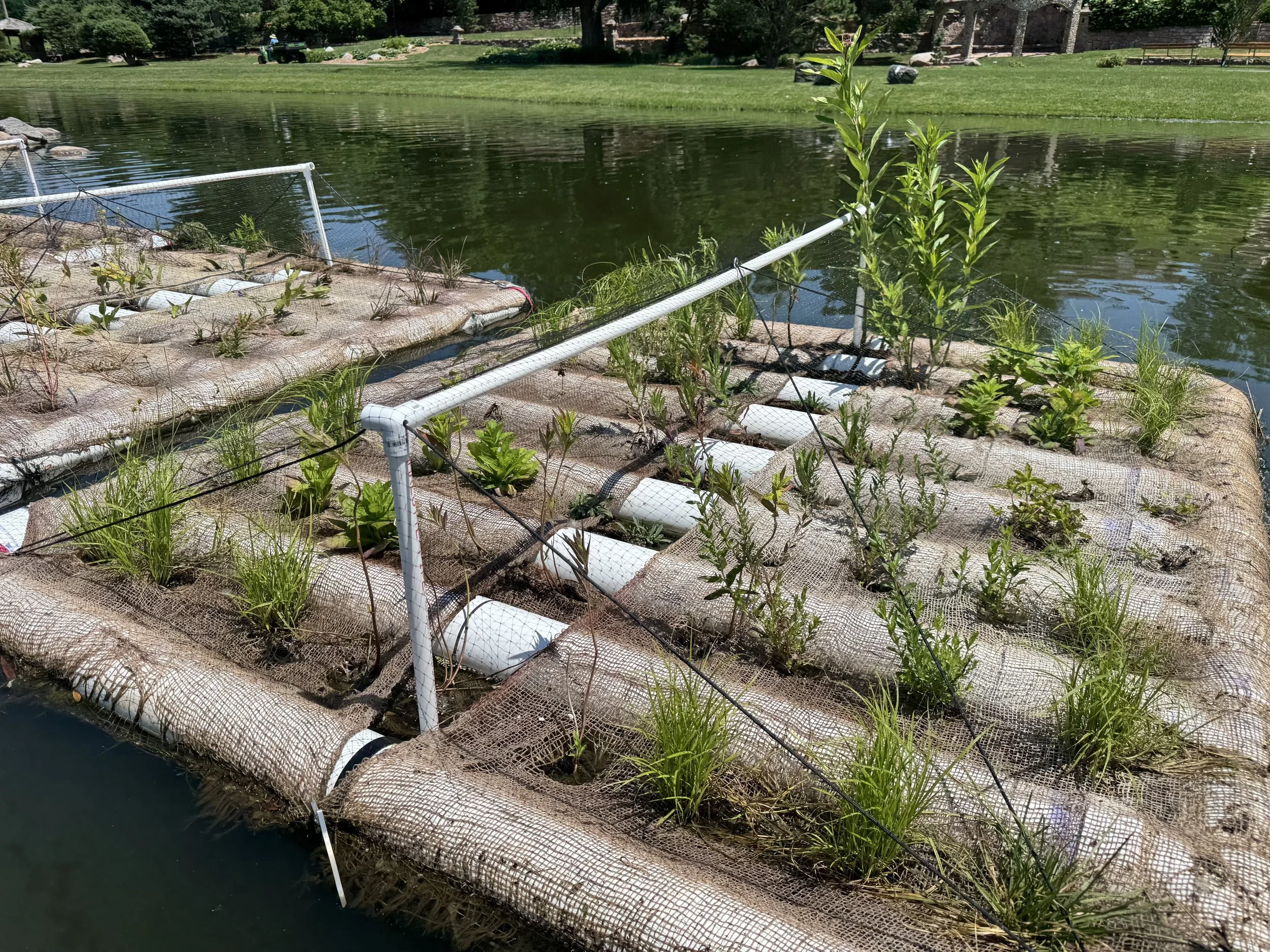Engineering Meets Ecology: Floating Wetlands Take Root in Sioux Falls
Earlier this year, Friends of the Big Sioux River and CNH Industrial’s Sioux Falls Sustainability Committee launched floating eco-islands at Covell Lake in Sioux Falls. Floating eco-islands are sustainable, constructed wetlands that consist of a platform base filled with native plants. Once placed in a waterbody, the plants’ roots help filter and clean the water, create habitats for aquatic species, and add biodiversity to an urban river setting.
These human-made structures were designed and constructed by CNH engineers Sienna Mayer and John Waltz. They consist of 4-inch PVC pipes glued together to form four 6’ x 7’ structures. Coco coir—a natural fiber extracted from coconut husks—was wrapped in burlap fabric and placed between each set of PVC pipes to serve as a growing medium for the plants while they become established. As the plants grow, their roots begin to dangle below the island panels, where they receive necessary nutrients from the water.
In addition to designing and building the physical structure, the team needed to determine which plants to grow on the island. The FBSR team researched plant species that are native to eastern South Dakota, attract pollinators, and have been used successfully in other floating islands in the Midwest. After compiling a list of around 100 plant species, they began to place them in a virtual plot based on their varying growing requirements. Taller plants were placed in the middle, with shorter plants placed around the outside of each island. Two islands contained wetland-focused plants, while the other two islands contained prairie-focused plants. Native plants were sourced and purchased from nurseries in the Midwest, including Allendan Seed Company in Winterset, Iowa, and Prairie Moon Nursery in Winona, Minnesota.
After almost a year of planning, it was finally time to install the islands at Covell Lake! On Friday, June 6, 2025, the team came together to plant and float the islands. The native plants were carefully placed in the coco coir burlap sacks according to the planting plan. Bird netting was then placed over the top of each island to prevent ducks and geese from pulling up the plants while they become established. The islands were floated down the lake and anchored to one of the small natural islands across from the Terrace Park Japanese Gardens. A trail camera was set up to observe the plant growth and wildlife happenings on the island at all times of the day.
After one growing season, the team has gathered some preliminary results to inform future island design and construction. 1) The islands are well constructed and withstand South Dakota weather conditions. However, they are extremely heavy, so a smaller design should be considered in the future. 2) Wetland plants survive better under these conditions compared to prairie plants. Future islands should consist primarily of native wetland plants, and a study should be conducted to record their nutrient uptake abilities. 3) The plants attract native wildlife. So far, ducks, insect pollinators, and fish have all been observed taking advantage of the floating eco-island plants or their roots!
Overall, this is an excellent example of environmental advocates and engineering experts coming together to enrich and sustain the Sioux Falls area’s natural resources and wildlife. Both organizations hope that these floating eco-islands not only directly impact water quality but also serve as an educational tool for the Sioux Falls community. The next time you are at Covell Lake, make sure to check out these one-of-a-kind floating habitats!
Ready to learn more about the design and implementation process? Check out our full webpage dedicated to the floating eco-islands!


